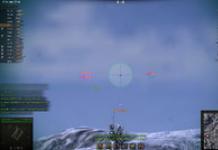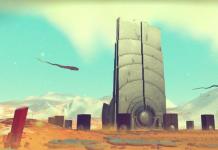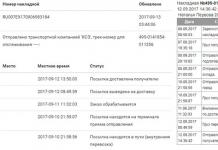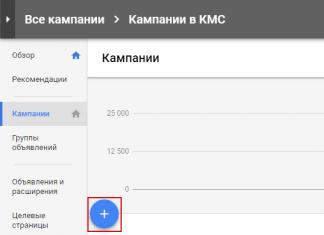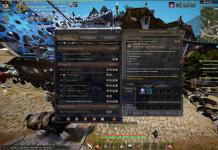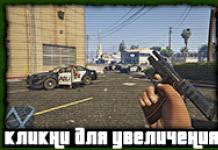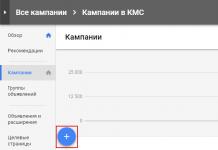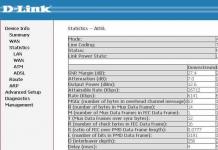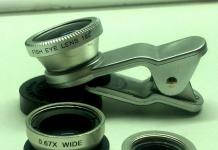Year/Date of Issue: 2011
Version: 10.1.0.14
Developer: H+H Software
Bit depth: 32bit
Interface language: Rus, Eng, Ger
Tablet: Present
Description: Description: Virtual CD is a program for creating virtual CDs. Allows the creation of up to 25 virtual CD/DVD drives and the number of CD/DVD images, limited only by the amount of free space on the hard drive, which, if necessary, can work simultaneously with different applications.
Add. information: Another use of several virtual CD drives is to install the most frequently used CD images in them on a permanent basis (in this case, you will not need to first “insert” them into the virtual CD drive, and only then use them). The program can work with Data / Audio / mixedmode CD, DVD-ROM, non-CSS DVD-Video, Photo-CD and CD-Text. When creating CD images, you can burn them to your hard drive either in normal mode or with compression (for example, a data disk can be compressed from 650 MB to 135 MB), it is possible to password-protect the created virtual CD and use the created virtual CDs on the local network. If necessary, Virtual CD connects to the Internet and downloads audio CD information from CDDB.
Basic features of Virtual CD
- Ability to use up to 25 virtual drives simultaneously
- Create an unlimited number of virtual disks
- Editor for creating virtual disks of any content
- Automatic identification of title, album and artist of audio discs
- Supports DVD-ROM, DVD-Video, Photo-CD and CD-Text formats
- Easy to use with easy copy mode for beginners
- Organize virtual disks into folders
- Import ISO files
- Improved data compression
- Access to virtual disks within the network
- Supports up to 99 audio tracks per virtual CD
- Editing existing virtual disks using the built-in editor
- Drive editor for changing the number of virtual drives in the system
- Protect virtual disks with a password from unauthorized access
New and improved in this version
- Full support for the Windows 7 operating system has been introduced;
- Added support for Blu-Ray and HD DVD;
- The program interface has been significantly redesigned for more convenient access to functions.
- Added functions for writing data to CD, DVD and Blu-Ray;
- Added functions for quickly converting any audio files to popular MP3 or OGG Vorbis. It is possible to set the quality of the outgoing file;
- New "Data Safe" mode for automatically creating encrypted disks;
- Other improvements: expanded support for ISO images, integration of external programs into the application interface, expanded API for developers and other, less significant improvements.
A small FAK on Russification
Introduction: if you have 7 or Vista, it is recommended to run the cracker as an administrator. Just in case, fireman
The Russification file is a self-extracting rar archive. By default, unpacking goes to %Program Files%\Virtual CD v10 - VirtualCD itself is installed there by default. If you selected some other directory when installing VirtualCD, then when unpacking the Russification files, simply specify it as the target directory.
For those who are especially meticulous: if, after unpacking the Russification package manually, you found “French” localization files, there is no need to trouble people with your discoveries. I did this intentionally. Calmly throw the contents of the archive where necessary and go to the settings - there will be Russian as an option.
Daemon Tools Lite is a tool for emulating CD/DVD/Blu-ray drives, a free program for reading and creating virtual images of laser optical discs. Using Daemon Tools Lite, you can create up to 4 virtual CD/DVD/Blu-ray drives in the system and you can use them like regular optical drives, with the only difference that you need to insert electronic impressions, images of optical storage media into them. The Daemon Tools Lite utility is an excellent solution for a computer that does not have a laser drive. Install Daemon Tools Lite and you will be able to create *.iso, *.mdx and *.mds disk images, as well as mount images of *.iso, *.nrg, *.cue, *.vhd, *.ccd, formats into a virtual drive. *.bwt, *.b5t, *.b6t, *.cdi, *.isz, *.dmg.
Reading images
Using a virtual disk image allows you to store information more reliably, because the disk image file cannot be scratched, and the reading speed from a virtual drive is many times higher than the reading speed of a conventional drive; moreover, when accessing a virtual drive, there is absolutely no noise that occurs when a laser disk rotates. Storing information in the form of image files on disk is also convenient, because it does not take up space on shelves. Mounting disks is possible directly from the Explorer window; the program is built into its context menu during installation. Daemon Tools Lite implements algorithms to bypass copy protection Laserlock, CDCOPS, Protect CD, SafeDisc, Securom, StarForce and others, thanks to this, you can emulate both regular and protected disks.
Screenshots of Daemon Tools Lite
|
|
Sometimes PC users are faced with the acute question of how to create a virtual hard drive or CD-ROM. Let's study the procedure for performing these tasks in Windows 7.
The methods for creating a virtual disk, first of all, depend on what kind of option you want to get in the end: a hard drive image or a CD/DVD. Typically, hard drive files have a VHD extension, and ISO images are used to mount a CD or DVD. In order to carry out these operations, you can use the built-in Windows tools or turn to the help of third-party programs.
Method 1: DAEMON Tools Ultra
First of all, let's consider the option of creating a virtual hard disk using a third-party program for working with drives - DAEMON Tools Ultra.
- Run the application with administrator rights. Go to the tab "Tools".
- A window opens with a list of available program tools. Select an item "Add VHD".
- The window for adding VHD opens, that is, creating a conditional hard drive. First of all, you need to register the directory where this object will be located. To do this, click on the button to the right of the field "Save as".
- A save window opens. Enter the directory where you want to place the virtual drive. In field "File name" you can change the name of the object. The default is "NewVHD". Next click "Save".
- As you can see, the selected path is now displayed in the field "Save as" in the DAEMON Tools Ultra program shell. Now you need to specify the size of the object. To do this, by toggling the radio button, set one of two types:
- Fixed size;
- Dynamic expansion.
In the first case, the volume of the disk will be precisely specified by you, and when you select the second item, the object will expand as it fills. Its actual limit will be the size of the empty space in the HDD section where the VHD file will be placed. But even if you choose this option, you are still in the field "Size" you need to set the initial volume. Simply enter a number, and the unit of measurement is selected to the right of the field in the drop-down list. The following units of measurement are available:
- megabytes(default);
- gigabytes;
- terabytes.
Be careful when choosing the right item, because if you make a mistake, the difference in size compared to the desired volume will be an order of magnitude larger or smaller. Then, if necessary, you can change the name of the disk in the field "Mark". But this is not a prerequisite. After completing the described steps, to start forming the VHD file, click "Start".
- The VHD file generation process is in progress. Its dynamics are displayed using an indicator.
- After the procedure is completed, the following message will be displayed in the DAEMON Tools Ultra shell: "VHD creation process completed successfully!". Click "Ready".
- Thus, a virtual hard drive has been created using the DAEMON Tools Ultra program.








Method 2: Disk2vhd
If DAEMON Tools Ultra is a universal tool for working with media, then Disk2vhd is a highly specialized utility designed only for creating VHD and VHDX files, that is, virtual hard disks. Unlike the previous method, using this option, you cannot create an empty virtual drive, but only create a copy of an existing disk.

Method 3: Windows Tools
A conditional hard drive can also be created using standard system tools.
- Click "Start". Right click ( RMB) click on the name "Computer". A list opens where you can select "Control".
- The system management window appears. In its left menu in the block "Storage Devices" move by position "Disk Management".
- The drive management tool shell launches. Click on the position "Action" and select an option "Create a virtual hard disk".
- A creation window opens, where you should indicate in which directory the disk will be located. Click "Review".
- The object viewing window opens. Navigate to the directory where you plan to place the VHD drive file. It is advisable that this directory be located on a different HDD partition than the one on which the system is installed. A prerequisite is that the partition is not compressed, otherwise the operation will not work. In field "File name" Be sure to indicate the name by which you will identify this element. Then click "Save".
- You are returned to the virtual disk creation window. In field "Location" we see the path to the directory selected in the previous step. Next, you need to assign the size of the object. This is done in almost the same way as in the DAEMON Tools Ultra program. First of all, select one of the formats:
- Fixed size(set by default);
- Dynamic expansion.
The values of these formats correspond to the values of the disk types that we previously discussed in DAEMON Tools.
- megabytes(default);
- gigabytes;
- terabytes.

After completing these steps, press "OK".
- Returning to the main partition management window, in its lower area you can see that an unallocated drive has now appeared. Click RMB by its name. Typical template for this title "Disk No.". Select an option from the menu that appears "Initialize disk".
- The disk initialization window opens. Here you just need to click "OK".
- After this, the status of our element will be displayed in the list "Online". Click RMB by empty space in the block "Not distributed". Choose "Create a simple volume...".
- The welcome window opens "Volume Creation Wizards". Click "Further".
- The next window indicates the volume size. It is automatically calculated from the data that we provided when creating the virtual disk. So you don’t need to change anything here, just click "Further".
- But in the next window you need to select the letter of the volume name from the drop-down list. It is important that there is no volume on the computer with the same designation. After the letter is selected, press "Further".
- It is not necessary to make changes in the next window. But in the field "Volume Label" you can replace the standard name "New Volume" to any other, for example "Virtual disk". After that in "Explorer" this element will be called "Virtual Disk K" or with another letter that you selected in the previous step. Click "Further".
- Then a window will open with the summary data that you entered in the fields "Masters". If you want to change something, then click "Back" and make changes. If everything suits you, then click "Ready".
- After this, the created virtual drive will appear in the computer management window.
- You can go to it using "Conductor" In chapter "Computer", where there is a list of all drives connected to the PC.
- But on some computer devices, after a reboot, this virtual disk may not appear in the specified partition. Then run the tool "Computer Management" and go back to the department "Disk Management". Click on the menu "Action" and choose a position .
- The drive connection window opens. Click "Review…".
- The File Browser tool appears. Go to the directory where you previously saved the VHD object. Select it and click "Open".
- The path to the selected object will be displayed in the field "Location" window "Attach virtual hard disk". Click "OK".
- The selected drive will be available again. Unfortunately, on some computers you have to perform this operation after each restart.





















Method 4: UltraISO
Sometimes you need to create not a virtual hard disk, but a virtual CD drive and run an ISO image file in it. Unlike the previous one, this task cannot be performed solely using operating system tools. To solve this, you need to use third-party software, for example, UltraISO.

We figured out that virtual disks can be of two types: hard disks (VHD) and CD/DVD images (ISO). If the first category of objects can be created both using third-party software and using the internal Windows tools, then the task of mounting an ISO can only be completed by using third-party software products.
Thanks to this program, you can obtain images from any optical disks and emulate them onto virtual disks. Also, the Virtual CD functions allow you to remove Tages protection from disks for full use of their contents. For example, this application is suitable for creating images of computer games, licensed programs and films. If necessary, you can burn any images to CDs. To do this, it is enough to have the Virtual SD program installed on your computer. Downloading its new version for free will be useful for gamers and users of licensed programs.
Possibilities:
- creating CD images;
- adding virtual drives;
- increasing the service life of physical drives;
- burning images to CDs.
Principle of operation:
so, we downloaded Virtual CD for free and installed its trial version on the computer. In the start menu of this application you can obtain images of any contents of CDs, burn them to optical media and mount these images to virtual drives. As for the latter, up to 23 such virtual devices can be created. In addition, this application allows you to bypass Tages protection against copying data.
Note that you can install Virtual SD on Windows XP, Vista, 7 and 8.
Pros:
- high-quality creation of images of any contents of optical discs;
- writing data to disk;
- the program bypasses Tages disk protection;
- the ability to download a free Virtual CD to your computer;
- simple interface.
Minuses:
- for the Russian-language menu you need to install a localizer;
- The program is free for the first 30 days.
The Virtual CD program is well suited for creating images of any content on CDs. In addition, the application allows you to bypass Tages protection and write any images to optical media.
By default, the program has an English menu. To change the interface language, you need to download the localization language.
Depending on the emulator program, you can install five or six or even 10–20 virtual drives on your computer, and all this will not cost the user a penny, whereas the number of physical drives is usually limited to one or two.
Most users use CD/DVD drive emulation programs for the following purposes:
Run CD/DVD images from your hard drive without having to burn it to a physical optical disc.
- Increased data access speed (hard disk speed is much higher than optical disk).
- Backup several disk image files to a new hard drive, which is much easier than burning several new CDs/DVDs.
- Prevent CD/DVD discs from scratches or wear due to frequent use.
- Saving a copy of the optical disc to your computer's hard drive in case of damage, loss or theft.
- Freeing up work space by getting rid of a large number of physical disks.
- Launching disk images from a laptop or netbook that does not have built-in CD/DVD drives or with the drive turned off (to save battery charge).
- Providing access to the disk for users on the network.
- Disk encryption for security.
Keeping most of the above mentioned purposes in mind, all the following CD/DVD emulators are reviewed and rated according to the following parameters:
Number of available virtual drives.
- Supports ISO and other image formats.
- Possibility of creating a disk image from a CD/DVD.
- Interface and additional functions.
Review
 - this wonderful product allows you to mount an ISO file (or a disk image in another format) onto a virtual drive created using this program. Once the image is mounted, it will appear in Windows Explorer as a “real” CD/DVD or hard drive.
- this wonderful product allows you to mount an ISO file (or a disk image in another format) onto a virtual drive created using this program. Once the image is mounted, it will appear in Windows Explorer as a “real” CD/DVD or hard drive.
Gizmo Drive supports up to 26 virtual drives. In addition to ISO, it works with other images, including VHD, IMG, BIN, CUE, NRG, CCD, MDS, MDF and GDRIVE.
In addition to running disk images on virtual drives, Gizmo Drive is useful for creating ISO images (both disks and individual folders), or for burning the contents of an ISO file or folder to an optical disc. To perform various tasks, the program provides a special manager and image wizard.
Gizmo Drive's user interface is informative and useful. Additional program features include creating GDRIVE images to simulate a hard drive with compression and encryption, creating a virtual hard drive with system memory support for improved performance in accessing time-sensitive data, and more.
Another emulator designed to create and manage virtual CD/DVD drives. It allows you to run many types of disk images without burning them to a CD or DVD. This program will also help you create disk images and save them in various formats (including ISO, BIN/CUE, NRG and UIF).
MagicDisc Virtual DVD/CD-ROM has a simple interface and supports up to 15 virtual drives simultaneously. Other features supported by this program include compression of various formats (ISO, NRG, CUE, MDS, CCD) into UIF, and recovery of UIF into ISO. The function of burning images to CD/DVD discs is not supported by this program.
Another easy-to-use emulator is called . With its help, a disk image can be mounted on a virtual drive in just two mouse clicks. Just as with the above-mentioned programs, this is achieved using auxiliary commands that appear in the Windows Explorer context menu, and are used to mount and unmount images.
In the latest versions of Virtual CloneDrive you can install (as in MagicDisc Virtual DVD/CD-ROM) up to 15 virtual drives. The original useful features of the utility also include automatic mounting of the latest image and special icons that indicate virtual drives (to distinguish them from physical ones).
Virtual CloneDrive's supported formats include ISO, CCD, IMG, UDF, BIN, etc., but NRG, MDF/MDS, and some others are not supported. This, as well as the lack of the ability to create and burn disk images, is a disadvantage of this program.
Other programs
In addition to the above-mentioned products, there are a number of free programs that perform similar functions. Below you can see a list of some of them:
Alcohol 52% Free Edition is a stripped-down version of the commercial product Alcohol 120%. The free version is limited to 6 virtual drives, and installs a search bar in your browser (can be disabled). Additional features - CD/DVD manager and wizard for creating images in ISO, MDS, CCD and CUE formats.
DAEMON Tools Lite supports a total of 4 virtual drives. Supported formats include ISO, ISZ, CCD, CDI, CUE, MDS, NRG, BWT, PDI, etc. DAEMON Tools Lite also allows you to create images in ISO and MDS formats. This program, like the previous one, installs an additional search bar in your browser and changes the main search provider.
Virtual CD-ROM Control Panel is a free utility from Microsoft that runs on the Windows XP operating system and allows you to add or remove virtual drives from A to Z. Supported formats: ISO, UDF, CDFS, ROCK or JO. Cons: not very user-friendly interface and lack of ability to create images.
WinCDEmu is an open source program that allows you to mount CD/DVD images by simply clicking on the desired file. To dismantle the image, you just need to double-click on it again, or remove the corresponding drive using the context menu. The utility supports ISO, CUE, NRG, MDS/MDF, CCD, IMG formats and works in operating systems from WinXP to Win7. Disadvantages - lack of an uninstaller, and the inability to create images.





